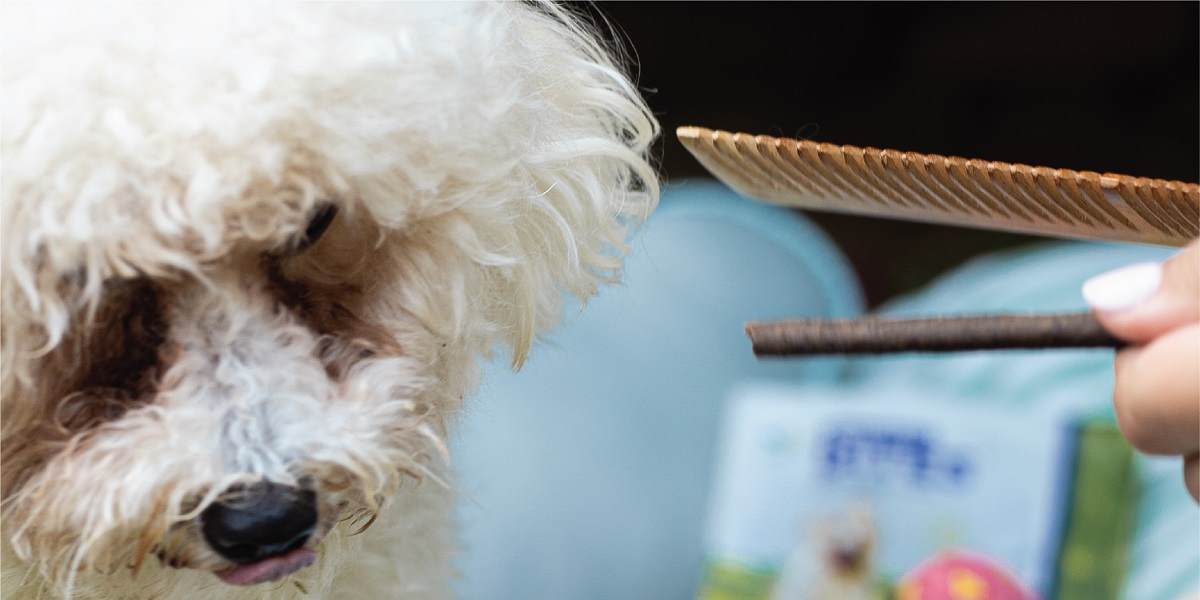There are several reasons why you might groom your dog yourself rather than using a professional dog grooming service. According to professional dog associations, like the National Cavoodle Association of Australia, it could be that your budget does not currently stretch to professional dog grooming fees. It could also be you have taken your dog to a grooming parlour before, and your dog went frantic. It could also be that by practising, you have learned some dog grooming skills, and you enjoy grooming your dog.
Whatever the reason why you choose to groom your dog yourself, it is also important that you have a full understanding of the dog grooming basics, so we have outlined ten of those core basics below.
#1 – Preparation
Unless you want your grooming session to be shambolic, you should prepare well. For example, schedule it for when there will not be many interruptions, take your dog for a walk beforehand to burn off their energy, and ensure you have everything you need at hand.
#2 – Correct Tools And Supplies
The second core principle of dog grooming at home is having all the correct tools and equipment. These will include combs, scissors, shampoo, towels, and even some treats to encourage your dog to sit still whilst you are grooming them.
#3 – Brushing Their Coat
In truth, brushing your dog’s coat should not be something that only happens on the occasions you are grooming them. To remain healthy, a dog’s coat should be brushed every day, especially if they are a long-haired dog. Regular brushing will help detangle their fur, prevent matting, and keep their coat shiny.
#4 – Bathing Your Dog
Bathing can see dogs behave at two extremes. One will be they love baths and cooperate perfectly. The other is they hate getting wet and becoming stressed. If the latter, we suggest you gently introduce them to bath time, with one option being to get into the bath yourself with them and gently get them used to being wet. As for shampoos, you should choose those proven to be safe, healthy, and pH-balanced.
#5 – Trimming Their Coat
Certain breeds have fur which continuously grows, such as poodles, and these are especially in need of regular trimming. For other breeds, a need to trim their fur can arise from it becoming tangled or when the dog has laid on something sticky. Care and gentle calming of your dog are essential when trimming fur to avoid then suddenly jumping up and the scissors nicking their skin.
#6 – Nail Trimming
Many dogs’ nails will remain at a healthy length due to them being worn naturally when they are out walking. However, if you notice a clicking noise when your dog walks on a hard floor, or you can see visually that their nails are too long, then they need trimming. Use dog nail clippers, and provided you clip just the excess nail and not too near their paw, you should not be in any danger of causing bleeding.
#7 – Caring For Their Ears
Grooming is a great opportunity to check your dog’s ears. If they have any gunk in them, then gently wiping them with a cotton wool ball with some witch hazel will give them an effective clean. You can also trim excess fur growing around their ears.
#8 – Caring For Their Eyes
This is more of a precaution rather than any actual grooming taking place. Inspect your dog’s eyes and look for signs of excess discharges, redness, or cloudiness.
#9 – Caring For Their Paws
Apart from clipping their nails, paw care involves checking their pads for cuts or abrasions and trimming excess fur around their paws.
#10 – Caring For Their Teeth
Finally, you should be checking your dog’s teeth for signs of tartar build-up, damage, or excessive redness or swelling in their gums. Use either your fingers or a toothbrush to apply dog toothpaste to clean their teeth. Dental sprays are also available should your dog not like having the toothbrush in their mouth.

